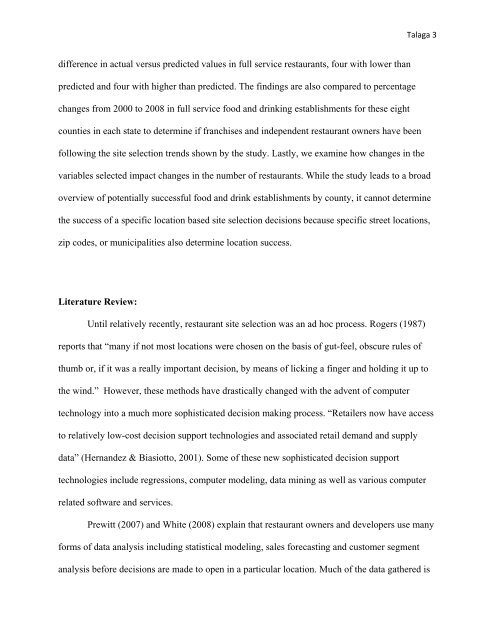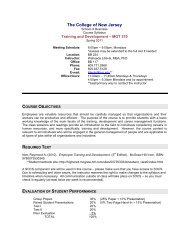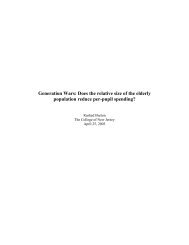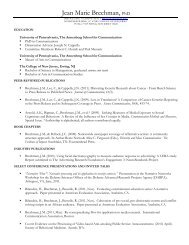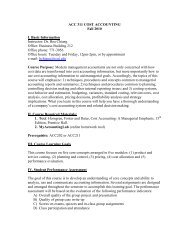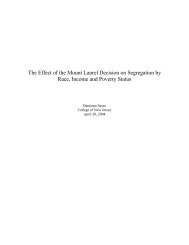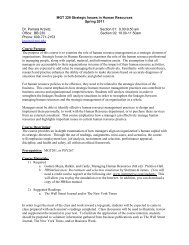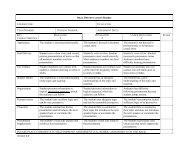Location, Location, Location: An Econometric Analysis of Restaurant ...
Location, Location, Location: An Econometric Analysis of Restaurant ...
Location, Location, Location: An Econometric Analysis of Restaurant ...
Create successful ePaper yourself
Turn your PDF publications into a flip-book with our unique Google optimized e-Paper software.
difference in actual versus predicted values in full service restaurants, four with lower than<br />
predicted and four with higher than predicted. The findings are also compared to percentage<br />
changes from 2000 to 2008 in full service food and drinking establishments for these eight<br />
counties in each state to determine if franchises and independent restaurant owners have been<br />
Talaga 3<br />
following the site selection trends shown by the study. Lastly, we examine how changes in the<br />
variables selected impact changes in the number <strong>of</strong> restaurants. While the study leads to a broad<br />
overview <strong>of</strong> potentially successful food and drink establishments by county, it cannot determine<br />
the success <strong>of</strong> a specific location based site selection decisions because specific street locations,<br />
zip codes, or municipalities also determine location success.<br />
Literature Review:<br />
Until relatively recently, restaurant site selection was an ad hoc process. Rogers (1987)<br />
reports that “many if not most locations were chosen on the basis <strong>of</strong> gut-feel, obscure rules <strong>of</strong><br />
thumb or, if it was a really important decision, by means <strong>of</strong> licking a finger and holding it up to<br />
the wind.” However, these methods have drastically changed with the advent <strong>of</strong> computer<br />
technology into a much more sophisticated decision making process. “Retailers now have access<br />
to relatively low-cost decision support technologies and associated retail demand and supply<br />
data” (Hernandez & Biasiotto, 2001). Some <strong>of</strong> these new sophisticated decision support<br />
technologies include regressions, computer modeling, data mining as well as various computer<br />
related s<strong>of</strong>tware and services.<br />
Prewitt (2007) and White (2008) explain that restaurant owners and developers use many<br />
forms <strong>of</strong> data analysis including statistical modeling, sales forecasting and customer segment<br />
analysis before decisions are made to open in a particular location. Much <strong>of</strong> the data gathered is


